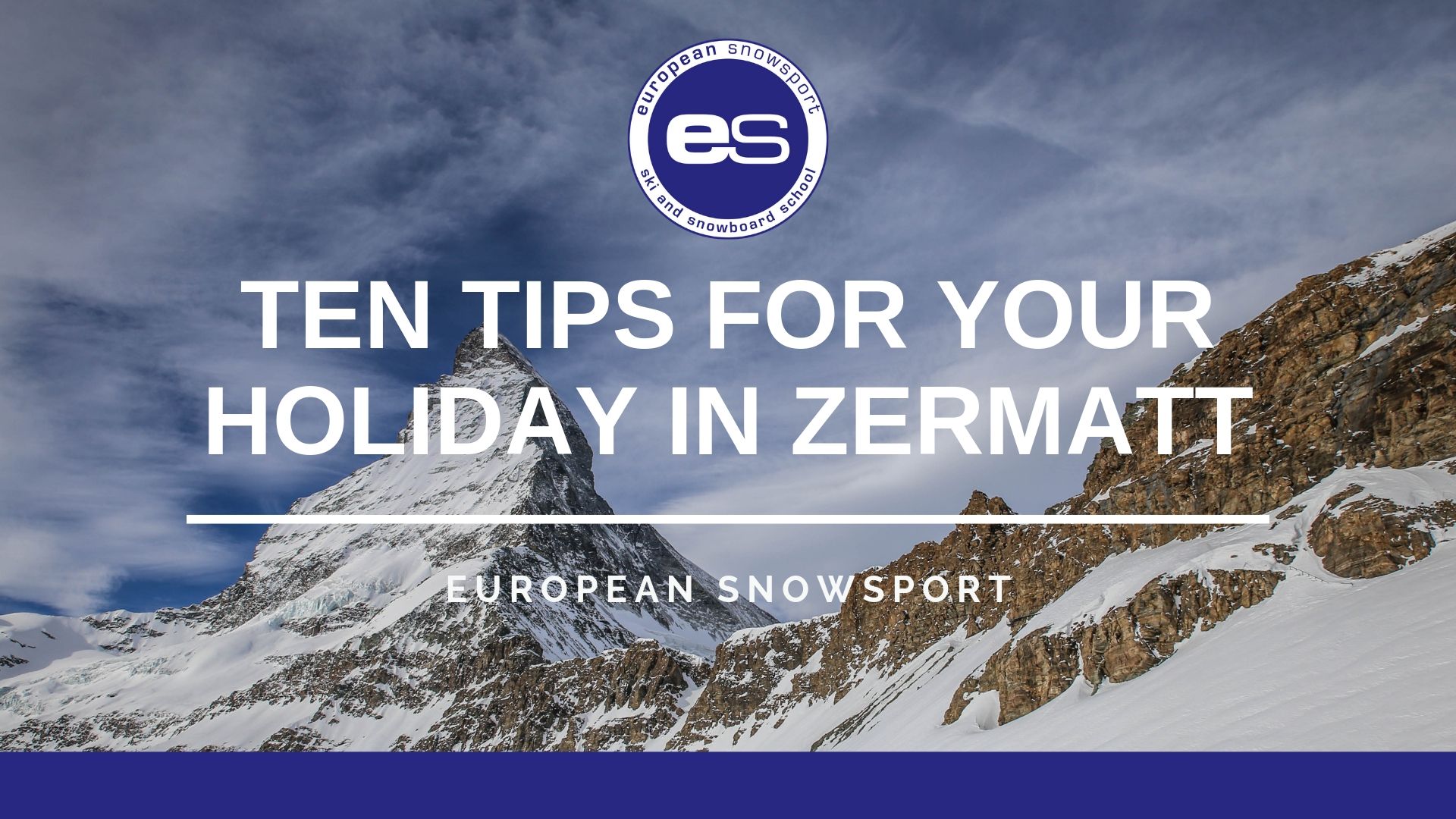
European Snowsport have been based in Zermatt for a quite a while now, making us local experts when it comes to your ski holiday. The long and complicated checklist that comes with any holiday can be tiresome, countless choices, negotiating the best deals, making sure you visit all the best spots. This article is all about helping out when it comes to organising your next ski trip to the world famous resort of Zermatt.

1. Packing your ski bag.
If you have your own gear to bring out on holiday then your ski bag is your best friend. Play the game right and you can pack lighter than usual, not to mention pay less for checked luggage! Instead of buying a single ski bag and a large suitcase, invest in a double ski or snowboard bag and make sure it’s the roller version. This way you can easily pack a holidays worth of luggage into one bag with only hand luggage to worry about on the plane, coach or train.
Folding or rolling? When it comes to getting those clothes in there it’s all about using up spare space. Ski socks in boots, gloves and goggles in helmet. Use bigger items such as towels and salopettes as padding at either end of the bag to protect your ski tips. The rest of your clothes will fit in better if you fold and roll instead of lying them flat, again this will it easier to fill those little spaces.
2. Getting to resort.
There are many ways to reach Zermatt initially but they almost all inevitably end with a scenic ride on the mountain railway. International airports Sion, Geneva, Zurich and Milan all have train links to either Brig or Visp then onwards to Tasch, where you change to the famous cog railway for the last leg. Swiss efficiency means everything runs like clockwork making train travel to resort a very enjoyable option.
Self-drivers are best to park in Tasch. From there you can either jump on the train or take a taxi transfer up the last section of winding road to the lower end of Zermatt.
Visitors arriving at nearby airports by private jet can arrange for Helicopter transfers into resort. Click here for more information.
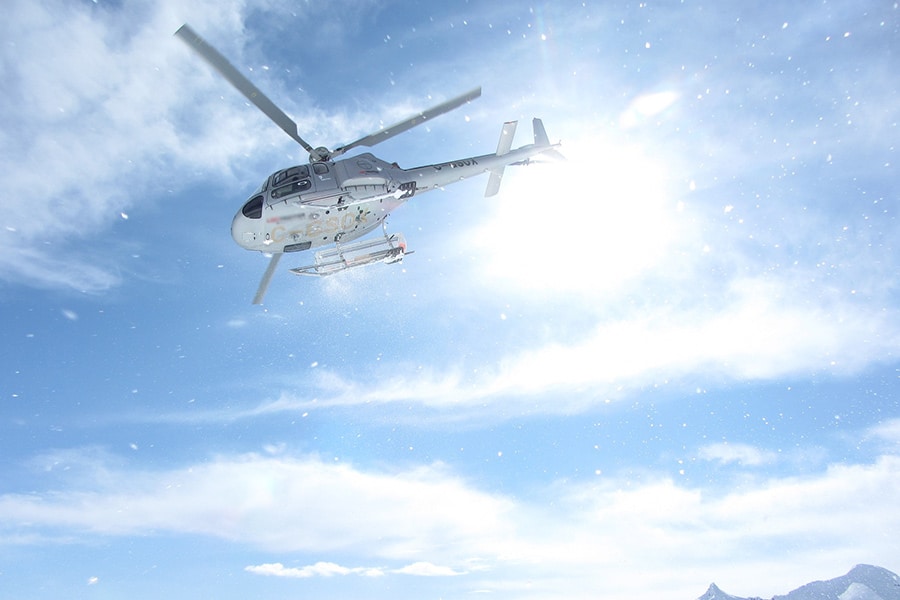
3. Arrival in resort, taxis or ski buses, chalet company pick ups?
Arguably one of the most loved characteristics of Zermatt is that it’s a car free town. So self-drivers will have to park up in Tasch or the bottom of town and carry on by bus, foot or electric taxi.
Electric taxis, or Electro’s, are expensive but one of the quickest ways to navigate Zermatt. They weave through the old side streets with ease and can be ordered 24/7. At the train station there’s a large taxi rank so you can jump in one as soon as you arrive.
A much cheaper option is one of the two bus routes. The Green line leaves from just opposite the station (by the entrance to the Gornergratbahn) and runs up and down the length of Zermatt between the station and Klein Matterhorn station throughout the day. If you are staying anywhere near the main river this could be a great option. The Red line also leaves from the station but loops up into Winkelmatten, part of the town that sits on the higher hillside. Winkelmatten can be a bit of a puff to walk up to but boasts some of the town’s most beautiful chalets and Matterhorn views. Once you have your ski pass these buses are free to ride. There’s a minimal charge of a few swiss francs without a pass.
Some of our partner companies here at ES offer pickups as part of the service. Bramble ski and Zermatt Ski Chalets will meet you as you arrive and take you by Electro to your accommodation.
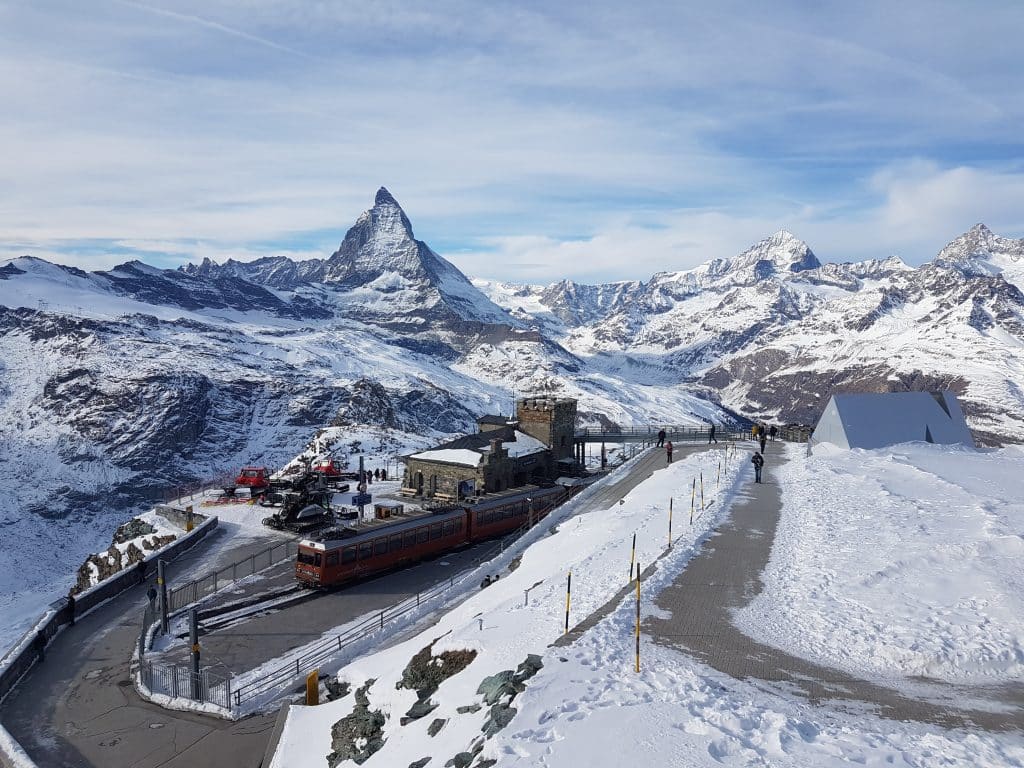
4. Food shop.
If you choose to go self-catered on holiday one of the first things on your mind when arriving is where you can do a shop. There’s plenty of choice in Zermatt with a number of decent supermarkets. Coop is closest to the station, with Migros a little further up the high street near the ice rink. Denner is further down from the station to your left as you leave the station’s main entrance and is also a great choice to pick up essentials. Coop and Denner are open from 8am to 8pm every day, Migros 8am to 7pm.
Many chalet companies will offer the option of a pre arrival shop where you can order ahead and have the fridge full when you get in (Extra charges may apply).
5. Lift passes.
There are multiple ways and places you can get your ticket to the slopes. Once again it is possible to pre-order your lift passes with the likes of Bramble Ski and Zermatt Ski Chalets. If you choose to organise your own it’s possible to book online through the Zermatt Bergbahnen website, sometimes with extra discount! Or you can buy in town at the Sunnega, Gornergrat or Klein Matterhorn base stations, tourist information (next to the train station) or Zermatters office on the main high street.
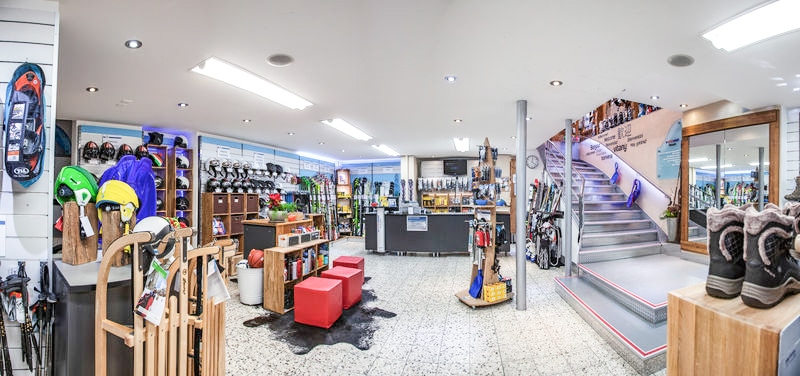
6. Ski Hire.
If you choose to hire your gear in resort instead it’ll be another thing on the list to tick off soon after arriving. Our friends at Glacier Sport are helpful and efficient, working closely with the ski school to make sure the transition from your arrival in resort to the mountain is as smooth as possible. They even provide an in-chalet fitting service for some chalet companies such as Bramble. With a few pre-arrangements a selection of equipment will be brought to your chalet ski room and you can go straight from your slippers to your ski boots! You can also visit Glacier in store to view their great range of gear, with something for every age and ability. You can even book online prior to your holiday.
7. What to wear.
The temperature in Zermatt can vary wildly from one side of the mountain to the other. With a height difference of over 2000m between the highest and lowest pistes, it’s worth being prepared for anything. Beginners heading to the Wolli Park on the Sunnega side may find themselves in a little suntrap whereas up on the glacier with risk of higher winds and a far greater altitude you need to make sure you’re wrapped up against the elements. Layers are key. Rather than one great big jacket and a t-shirt, wear a thermal and midwaters with a shell jacket that can easily be chopped and changed. Ski pants with ventilation are also a great way to regulate temperature, same goes for ski helmets with vents that open and close.
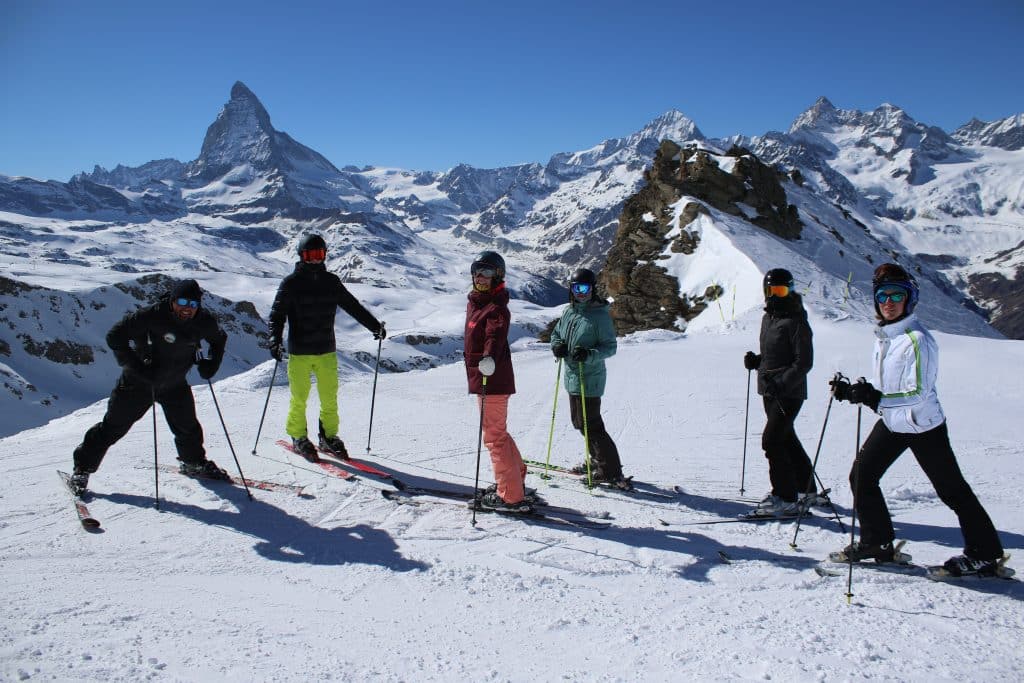
8. Where to ski.
Zermatt is divided into three main areas.
Sunnega sits on the far left of the piste map, accessible by an underground train. This area boasts the full spectrum of runs, from the Wolli park –a great place for complete beginners to get the hang of those turns. From there a steady progression of blues, reds, blacks and yellow itinerary runs present something for everyone. It’s also home to the Gourmetweg where world-famous restaurants like Chez Vrony, Adler Hitta and Findlerhof can all be found.
Gornergrat in the middle of the map can be reached either from the famous Gornergrat railway or by bubble from Klein. This is a really great area to build confidence for intermediate skiers, or indeed to visit on the first day of your holiday to get the ski legs back. At the top visitors can get uninterrupted views of the Matterhorn and opposite side of the valley, not to mention a birds eye view of the glaciers below.
The Glacier paradise, on the far right sits below the North-eastern side of the Matterhorn and can be reached by bubble of cable car at the Klein Matterhorn station also. From here snow sport enthusiasts can cross the border into Cervinia, Italy, which is a must do for skiers comfortable on red runs. The glacier itself boasts some great runs for intermediate and advanced skiers as well as the opportunity to take the new 3S lift to the highest piste in Europe.
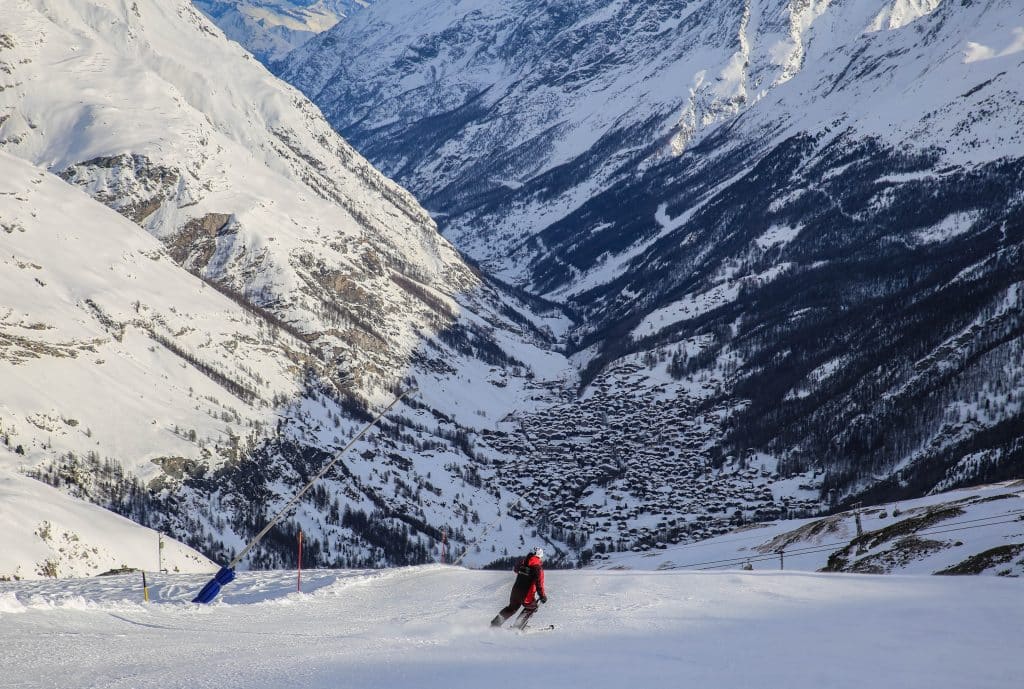
9. Where to eat lunch.
If you’re not the kind of skier to enjoy your sandwich on the chair lift you’ll be looking for somewhere good for lunch. If you just want to stop quickly for soup or a salad each ski area has a self-service restaurant. Sunnega self-serve is right there as you get off the train and is a great choice for a coffee stop as well as lunch. It can be busy at peak times so choosing a slightly earlier or later time to eat will help to avoid the crowds. The Gornergrat equivalent can be found at the Riffelberg station and Trocknersteg on the Glacier paradise side.
Maybe you’re looking to make a reservation somewhere a little more substantial Zermatt has a huge array of top class restaurants on every part of the mountain. People come from all over the world to try these Michelin star menus in a world-famous setting. Read more about them in our Zermatt resort guide.
10. Other activities.
It doesn’t all have to be about skiing. I mean it definitely can be, but there’s other stuff to do in resort too. After a morning on the hill why not try out the Gornergrat toboggan run, husky sledding on the Glacier, ice caves deep set into the mountain at well over 3000m! In the Easter holiday period ES run adventure camps for kids, letting them explore activities like high rope courses and paragliding after a morning ski lesson.
So there you have it, some tips and tricks to make your holiday in Zermatt run smoothly. If you would like to book lessons for you or your family feel free to get in touch, we are happy to help.
